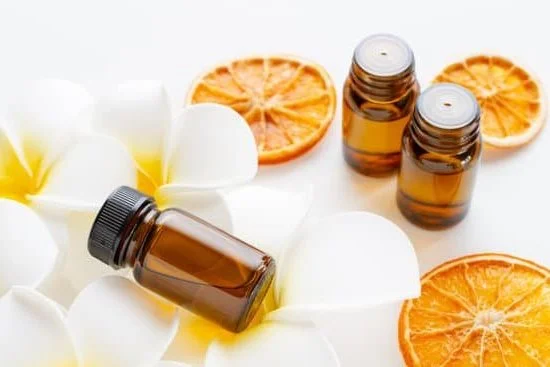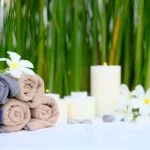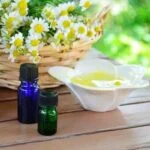Are you looking for a natural way to freshen up your living space? In this article, we will show you how to make aromatherapy room spray using essential oils. Aromatherapy room spray is a simple and effective way to introduce the benefits of aromatherapy into your home, while also creating a pleasant and inviting atmosphere.
Aromatherapy has been used for centuries as a holistic healing treatment, harnessing the power of essential oils to promote overall well-being. By incorporating aromatherapy into your daily routine, you can experience an array of physical and mental health benefits, from stress relief to improved sleep quality. With the use of an aromatherapy room spray, you can easily enjoy these benefits in any room of your home.
To create your own personalized aromatherapy room spray, it’s important to understand the different properties and benefits of essential oils. Each type of essential oil offers unique therapeutic effects, so choosing the right scents for your room spray is crucial in achieving the desired atmosphere or wellness benefit. In the following sections, we will delve into essential oils and their properties, as well as guide you through selecting the perfect scents for your DIY room spray.
Understanding the Benefits of Aromatherapy
Aromatherapy is a holistic healing treatment that uses natural plant extracts, also known as essential oils, to promote physical and emotional well-being. These essential oils are said to have a wide range of therapeutic benefits, including stress relief, relaxation, and improved mood. By using aromatherapy room spray, you can bring these benefits into your home or workspace.
The benefits of aromatherapy room spray are numerous. These sprays can help create a calming environment for better relaxation and sleep. They can also uplift your mood and provide mental clarity, making it a perfect addition to your workspace. Additionally, aromatherapy room sprays can help purify the air and eliminate odors naturally.
When using essential oils in your room spray, it’s important to understand the benefits of each oil. Lavender oil, for example, is known for its calming properties and is often used to promote relaxation and sleep. On the other hand, citrus oils like lemon or orange can boost energy levels and improve mood. By selecting the right essential oils for your room spray, you can harness their individual benefits to enhance your living or working space.
If you’re interested in incorporating the benefits of aromatherapy into your daily life through room spray, continue reading below for a step-by-step guide on how to make your very own DIY aromatherapy room spray.
Essential Oils and Their Properties
What Are Essential Oils?
Essential oils are highly concentrated, aromatic liquids that are extracted from plants. They contain the natural essence of the plant, including its aroma and beneficial properties. These oils have been used for centuries for their various therapeutic and medicinal benefits.
Properties of Essential Oils
Each essential oil has its own unique properties and effects on the mind and body. Some essential oils are known for their calming and relaxing effects, while others are energizing and uplifting. Certain oils also have antibacterial, anti-inflammatory, or pain-relieving properties. It’s important to understand the properties of different essential oils to choose the right ones for your aromatherapy room spray.
Choosing the Right Essential Oils
When selecting essential oils for your room spray, consider the specific benefits you want to achieve. For example, if you want a calming effect, you may choose lavender or chamomile essential oil. For an energizing effect, citrus oils like lemon or orange could be a good choice. Additionally, consider the compatibility of different scents and how they blend together to create a pleasing aroma.
Understanding the properties of essential oils is crucial in creating an effective aromatherapy room spray. By selecting the right oils with the desired properties, you can customize your room spray to suit your specific needs and preferences.
By understanding which essential oils suit best for particular moods or intention allows one to make well-informed choices when making their aromatherapy room spray. The selection process starts by knowing what kind of scent one prefer best whether it is calming, energizing or purifying; identifying these aspects will ultimately help acquire desired results from using the aromatherapy room sprays at home.
Choosing the Right Scents for Your Room Spray
When it comes to making your own aromatherapy room spray, choosing the right scents is crucial in creating the perfect blend for your desired effect. Whether you’re looking to create a calming atmosphere or boost your energy levels, the essential oils you choose will play a significant role in achieving your desired results. Here are some tips for selecting the right scents for your DIY aromatherapy room spray:
- Consider the effect you want: Before choosing which essential oils to use, think about the mood or atmosphere you want to create. For example, if you’re looking to promote relaxation and reduce stress, lavender and chamomile are excellent choices. On the other hand, if you want to increase focus and mental clarity, peppermint and rosemary may be better options.
- Complementing scents: When creating a room spray with multiple essential oils, it’s important to consider how the scents will work together. Some essential oils complement each other well, while others may clash and create an unpleasant fragrance. For example, floral scents like jasmine and rose pair nicely with citrusy scents like lemon and orange.
DIY Aromatherapy Room Spray Recipes
Aromatherapy room sprays are a fantastic way to bring the benefits of essential oils into your home. Not only do they freshen up a room, but they can also promote relaxation, uplift your mood, and even provide various health benefits.
Making your own aromatherapy room spray is not only cost-effective but allows you to customize the scent to cater to your specific needs and preferences. In this section, we will explore some DIY aromatherapy room spray recipes that you can easily make at home.
One popular DIY aromatherapy room spray recipe involves using lavender essential oil. Lavender is known for its calming and soothing properties, making it an excellent choice for promoting relaxation and reducing stress.
To make a lavender room spray, simply combine 15-20 drops of lavender essential oil with 1-2 tablespoons of witch hazel or vodka in a small spray bottle. Then, fill the rest of the bottle with distilled water, shake well, and your calming lavender room spray is ready to use.
Another favorite aroma for room sprays is citrus. Citrus essential oils such as orange, lemon, or grapefruit are invigorating and refreshing, perfect for creating a revitalizing atmosphere in your home. For a citrusy room spray recipe, mix 15-20 drops of your preferred citrus essential oil with 1-2 tablespoons of rubbing alcohol in a spray bottle. Fill the remaining space with distilled water, shake well before each use, and enjoy the uplifting scent of citrus in any room.
Experimenting with different essential oil combinations can customize the scent of your room spray to suit various purposes such as promoting focus and concentration or energizing the mind and body. Getting creative with different scents can be an enjoyable way to explore the world of aromatherapy while creating personalized blends that cater specifically to your needs or preferences on smell perception.
Step-by-Step Guide to Making Aromatherapy Room Spray
Aromatherapy room sprays are a fantastic way to add a natural and refreshing scent to your living space while also reaping the benefits of essential oils. Making your own aromatherapy room spray is not only cost-effective but also allows you to customize the scents according to your preferences. In this section, we will provide you with a step-by-step guide on how to make aromatherapy room spray at home.
First, you will need to gather the necessary materials, including a clean spray bottle, distilled water, witch hazel or vodka (as an emulsifier), and your choice of essential oils. It’s important to use a dark glass bottle to store your room spray, as this helps protect the essential oils from light exposure.
Next, decide on the combination of essential oils you would like to use for your room spray. Consider the properties of each oil and choose scents that complement each other well. For example, lavender is known for its calming properties, while eucalyptus has a refreshing and invigorating effect. Experiment with different combinations to find what works best for you.
Now it’s time to mix the ingredients together. Start by filling the spray bottle halfway with distilled water and then adding witch hazel or vodka until it’s nearly full. Add around 30-40 drops of essential oils to create a well-scented room spray. It’s essential to shake the bottle well before each use in order to distribute the oils evenly throughout the solution.
| Materials | Ingredients |
|---|---|
| Clean Spray Bottle | Distilled Water |
| Witch Hazel or Vodka | Essential Oils |
Tips for Storing and Using Your Room Spray
Aromatherapy room sprays are a great way to freshen up your living space while also enjoying the benefits of essential oils. Once you have made your own DIY aromatherapy room spray, it’s important to store and use it properly to ensure it maintains its efficacy and shelf life.
To store your room spray, it is best to keep it in a cool, dark place away from direct sunlight and heat. This will help preserve the potency of the essential oils. Additionally, make sure to store it in a glass bottle as essential oils can degrade plastic over time.
When using your room spray, shake the bottle gently before each use to ensure that the essential oils are well mixed with the other ingredients. Before spraying, do a patch test on a small area to check for any adverse reactions on fabrics or surfaces. You can also adjust the strength of the scent by varying the number of sprays you use.
It’s also important to note that room sprays should be used as a complementary method to other forms of aromatherapy such as diffusers or topical applications. While they provide a quick burst of fragrance, they may not have the same long-lasting effects as other methods. By storing and using your room spray correctly, you can continue to benefit from its delightful scents and therapeutic properties.
| Storage Tips | Usage Tips |
|---|---|
| Store in cool, dark place | Shake before each use |
| Away from direct sunlight and heat | Do patch test before spraying on fabrics or surfaces |
| Use glass bottle for storage | Adjust strength by varying number of sprays |
Conclusion
In conclusion, making your own aromatherapy room spray can be a fun and rewarding experience. Not only does it allow you to customize the scents to your preference, but it also gives you the opportunity to enjoy the many benefits of aromatherapy in the comfort of your own home. By understanding the properties of essential oils and choosing the right scents for your room spray, you can create a powerful tool for relaxation, stress relief, and overall well-being.
Learning how to make aromatherapy room spray is just the beginning of your journey into the world of natural healing and wellness. With a step-by-step guide and DIY recipes at your disposal, you have the freedom to experiment with different combinations of essential oils until you find the perfect scent for any mood or occasion.
Whether you are looking for a way to freshen up a room, promote better sleep, or simply lift your spirits, there is an endless array of possibilities when it comes to creating your own custom room spray.
As you begin to incorporate aromatherapy room spray into your daily routine, remember to store and use it properly in order to maintain its potency and effectiveness.
Keep these tips in mind as you embark on your aromatherapy journey: Store your room spray in a cool, dark place away from direct sunlight; shake well before each use to mix the essential oils with the other ingredients; and use it sparingly at first until you determine how strong you want the scent to be.
With these guidelines in mind, you can fully enjoy the benefits of aromatherapy room spray and enhance the atmosphere of any space in your home with beautiful and soothing scents.
Frequently Asked Questions
How Do You Make Calming Room Spray?
To make calming room spray, start by combining water and witch hazel in a spray bottle. Then add essential oils known for their calming properties, such as lavender, chamomile, or ylang-ylang. Shake well before each use.
What Essential Oil Is Good for Room Spray?
Lavender essential oil is a popular choice for room spray due to its calming and relaxing properties. It not only smells wonderful but also helps create a peaceful atmosphere in the room.
How Do You Make a Safe Room Spray?
When making a safe room spray, it’s important to dilute the essential oils properly to avoid skin irritation or allergic reactions. Always do a patch test before using the spray and keep it out of reach of children and pets. Ventilate the room after spraying.

Are you looking for a natural way to improve your health and wellbeing?
If so, aromatherapy may be the answer for you.






